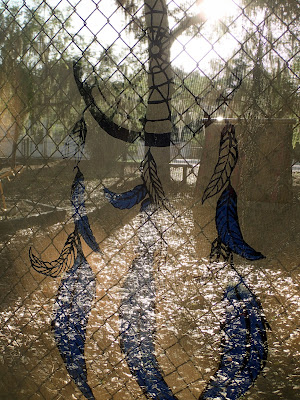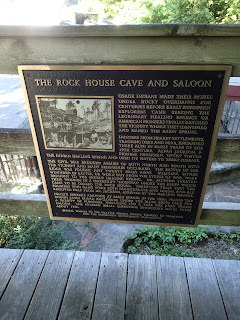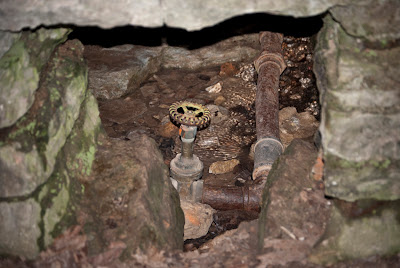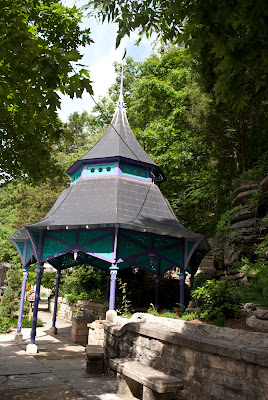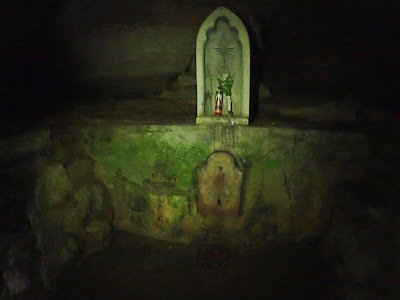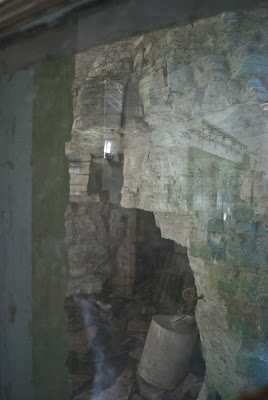Note: William Bartram first came to Florida in 1765 with his father John, who was exploring the new British possession for King George. After failing as a Florida plantation owner, William, aka Billy, returned to Florida on his own in 1774 and in 1779 published an epic narrative of his journeys throughout the southeast titled Travels. His lyrical prose inspired a generation of writers and naturalists to follow – they continue to inspire people today, including myself.
Even though there are historical markers and signs marking
the
Bartram Trail throughout the state, the small city of
Palatka seems to have
taken ownership of Bartram in Florida. Their festival of all things Bartram is known as the
St. Johns River Bartram Frolic, a reference to a Native
American ritual at Spalding’s Lower Store called the "Indian Frolic" in William
Bartram’s writings. The two-day long event held the last weekend of September
features historical reenactors, boat excursions, hiking, biking, and kayak
tours, art, music, and a symposium featuring Bartram presentations. My first
foray into the Frolic was a kayak trip to two of the springs visited by
Bartram: Satsuma and Welaka Springs.
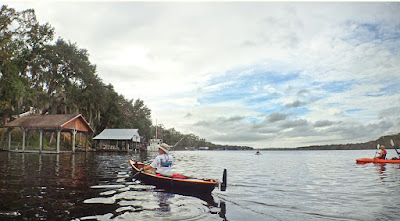 |
| Soon after putting in at the Shell Harbor boat ramp in Satsuma |
The forecast looked bleak the day before the excursion, but
the overcast skies resulted in comfortable cooler temperatures. The water of
the mighty St. Johns looked like swirling black ink and it was still swollen
from the passage of Hurricane Irma three weeks prior.
Our mission was to follow the route that was explored by
John and William Bartram on
December 27, 1765.
A short paddle up river led us
our first stop at Satsuma Spring, a site described in John Bartram’s journal
but only recently discovered by our tour leader, Bartram aficionado Dean
Campbell. From the river the spring run was impossible to detect, only by
interpreting the topography was it found, as much of the east side of the river
is composed of steep bluffs, and springs can only at low points along the
river.
The spring is located on
private property and the Bartram festival organizers had arranged our visit
ahead of time with the owner. A nearly horizontal live oak guards the spring’s
entrance and our tour leader informed us that Native Americans often
intentionally bent trees to indicate the presence of water sources.
The spring is in a small ravine and the
owner had lined the path with mulch to cover up the mud created by Irma.
Confined within a semi-circular basin made of cement filled-sand bags to
prevent erosion, the spring wreaks of sulfur, one of the clues that linked it
to the Bartrams. John Bartram’s journal described the spring this way:
"a
large fountain (big enough to turn a mill) of warm clear water of a very
offensive taste, and smelt like bilge-water, or the washings of a
gun-barrel...." The smell of sulfur, while stinky to most made one
of my fellow paddlers feel nostalgic as she explained that she grew up drinking
sulfur water and actually liked the smell. Another paddler claimed that it
made an excellent mosquito repellant and drinking the water would keep the bugs
at bay.
The property owner told us
that the torrential rains from Irma had “opened up” the spring and improved its
flow. On this gray overcast day the spring water possessed the distinctive cerulean
hue I’ve come to associate with Florida’s most beautiful springs.
After a few minutes of soaking in the
history and natural beauty of this 3rd magnitude spring, we returned to our
kayaks and paddled on.
 |
| Native Americans were known to have intentionally bent trees to indicate water sources |
 |
| Observing the spring vent |
 |
| The white stuff on the leaves is bacteria that indicates the presence of sulfur |
 |
| Here's what it looks like where the Satsuma Spring run enters the river |
Next was Nashua Spring, also on private property, but in
this case we could see nothing more than the Bartram Trail sign marking its
location on the river. We paddled on, under leaning live oak limbs, around
newly downed tree trunks, and past a half dozen locals in powerboats throwing
cast nets in the pursuit of shrimp. At Turkey Island we turned left into a cove
towards Welaka Spring, another third magnitude spring – one I remember fondly
from my adolescence.
When I was
teen my friends and I would trek up this cove until water hyacinths impeded our
progress. Then we’d be forced to wade the rest of the way through the dark
water, (with the hyacinths at face level), until we reached the spring. There
was a rope swing and one could swing out right over the spring boil and plunge
into the freezing water, an oasis of clarity in the otherwise root beer-colored
cove.
 |
| Dean Campbell explaining what the Bartrams would have experienced on this part of the river |
As we paddled to the spring I notice immediately, (with
great glee), that there are no longer water hyacinths to be found anywhere. The
only object near the spring is a floating house – a homemade houseboat on
pontoons – positioned adjacent to the boil. The spring is “browned out”,
meaning the water level of the surrounding river is so high that the brilliant
blue hue, so noticeable at Satsuma Spring, is not evident here. There is,
however, a significant boil on the surface indicating a high amount of water
flow. While our tour leader relates anecdotes about the spring’s history, the
rain we had dodged earlier began to fall gently, and we paddled back down river
to our starting point, following the Bartrams’ footprints and grateful that
they can still be found over 250 years after they explored this location.
 |
| These Bartram Trail signs mark locations visited by William |
 |
| Dean over the boil of Welaka Spring |
 |
Dean speculates that his floating house was moved back
in the cove as protection from Hurricane Irma |
 |
| Yours truly as a teenager, jumping into Welaka Spring |
The next day the featured event of the Frolic was the
Bartram Symposium with five different speakers. Despite persistent rain, an
enthusiastic audience of about 65 people enjoyed close to three hours of
presentations about the 18th century botanist and explorer. Over-sized framed
prints of William Bartram’s drawings ringed the room and a Bartram re-enactor was
on-hand, posing for selfies with eager Bartramphiles. The first two speakers
were co-authors of
Travels on the St.Johns River, a book devoted entirely to the Bartrams expeditions up and
down the river. Thomas Hallock, a professor of English at the University of
South Florida St. Petersburg, gave a brief Bartram overview and co-author
Richard Franz, an emeritus scientist at the Florida Museum of Natural History, discussed the flowers Bartram observed along his trip on the St. Johns. Next
the Environmental Archaeology Collection Manager at the Florida Museum of
Natural History, Irvy R. Quitmyer, talked about the archeology of the region,
specifically the indigenous people who lived near the river before the Bartrams
arrived. Brad Sanders of the Bartram Trail Conference next discussed
plans to attempt to designate a
Bartram Heritage Corridor along the routes
traveled by the Bartrams (seven states in total.) The Symposium concluded with
an animated presentation by Bartram muralist and reenactor
Dean Quigley.
 |
| The Bartram reenactor stayed in character throughout the symposium |
 |
| Bartram Frolic organizer Ken Mahaffey |
William Bartram’s travels were published just 15
years after America declared independence from England. His powerful spiritual
descriptions of what he encountered in Florida inspired writers and authors of
the period, from the
poet Coleridge to influential transcendentalist
Henry David Thoreau. What I
learned from attending the Bartram Frolic is that his beautiful words still echo up and
down the St. Johns River and they still have the power to inspire. What
an amazing legacy.
 |
| Interpretive Bartram sign in Welaka |
 |
| The Seminoles named William Bartram Puc Puggy which means "Flower Hunter" |























